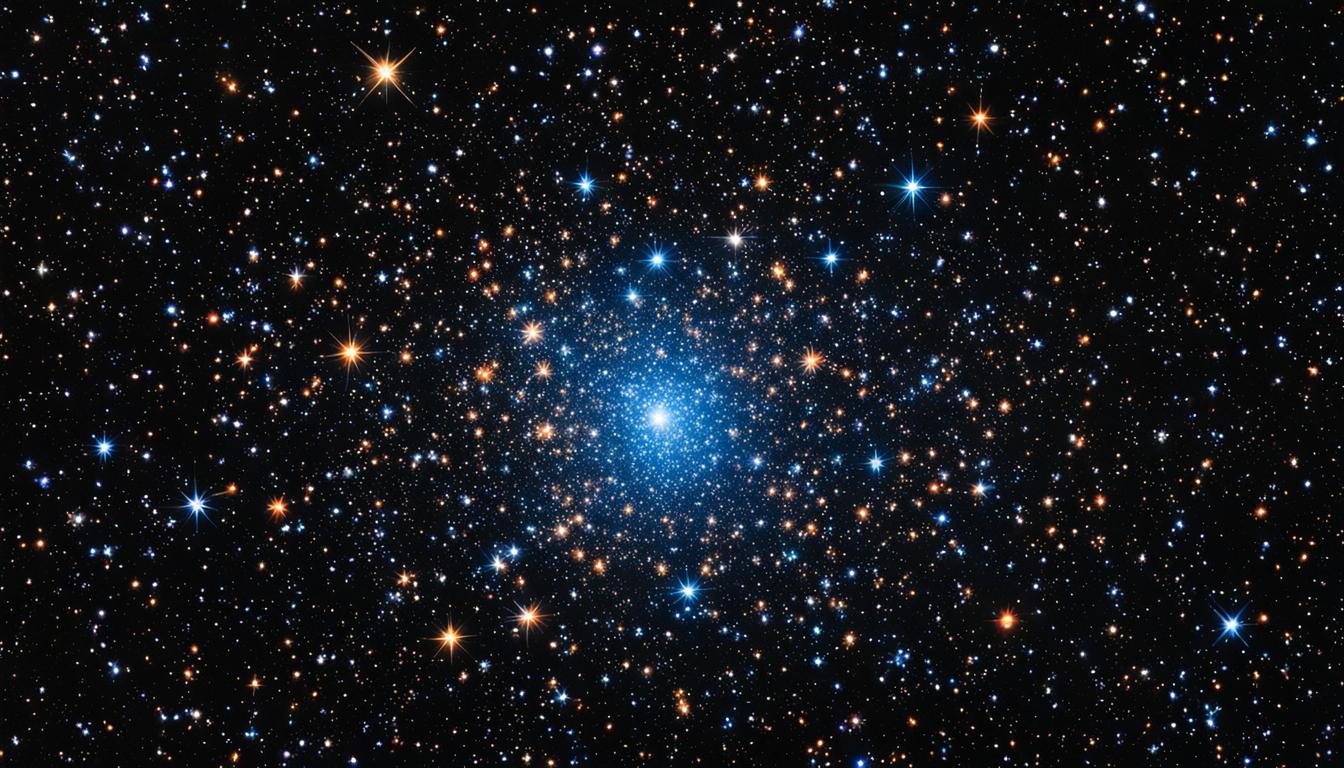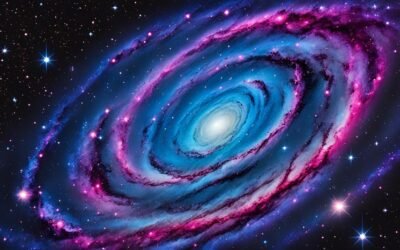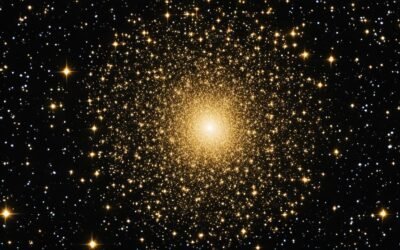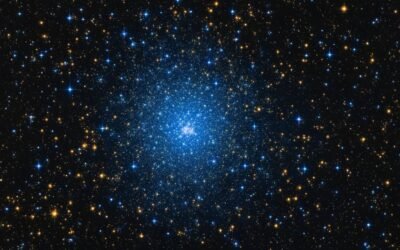Welcome to the captivating world of celestial objects and astronomy. In this article, we will delve into the wonders of Messier 39, an extraordinary star cluster located in the constellation Cygnus. As one of the many deep-sky objects cataloged in the famous Messier catalogue, Messier 39 offers a glimpse into the vastness of our universe and the beauty it holds.
Key Takeaways:
- Messier 39 is an open star cluster situated in the constellation Cygnus.
- It can be observed with binoculars or small telescopes and has an apparent magnitude of 5.5.
- The cluster is approximately 1,010 light-years away from us and spans an angular diameter of 29 arcminutes.
- Messier 39 is estimated to be 200 to 300 million years old and contains around 30 confirmed members.
- Its inclusion in the Messier catalogue highlights its historical and astronomical significance.
Location and Coordinates
Now that we’ve learned about Messier 39’s fascinating characteristics, let’s explore its exact location in the night sky. Messier 39 can be found in the constellation Cygnus. To locate this celestial object, look two degrees to the south of the star Pi Cygni. Additionally, Messier 39 is approximately 9° east-northeast of the prominent star Deneb.
The precise coordinates of Messier 39 are as follows:
| Right Ascension (R.A.) | 21h 31m 08s |
|---|---|
| Declination (Dec.) | 48° 27′ 00″ |
With these coordinates in mind, you’ll have no trouble locating Messier 39 in the night sky. Whether you’re using binoculars, a small telescope, or simply observing with the naked eye, take the opportunity to appreciate the beauty of this remarkable star cluster.
Observing Messier 39
Messier 39, a captivating star cluster, is easily observable with naked eyes under dark sky conditions. However, to fully appreciate its intricate details, binoculars or small telescopes at low magnifications are recommended. When observed with a small telescope, the cluster reveals around two dozen members, but its true beauty is more clearly resolved through binoculars. In fact, at 7×50 magnification, the triangular shape of Messier 39 and the three bright stars marking its corners become visible, providing a delightful celestial spectacle. For optimal viewing, look towards the constellation Cygnus, especially during the summer months when it is positioned high overhead.
“Using a pair of binoculars or a small telescope to observe Messier 39 will unveil a treasure trove of celestial wonders. Its triangular shape, along with the crisp brightness of its stars, creates a mesmerizing visual treat for astronomy enthusiasts.”
Whether you are an amateur stargazer or a seasoned astronomer, observing Messier 39 is a rewarding experience that allows you to witness the fascinating beauty of our universe.
Observing Tips:
- Find a location away from light pollution to have the best chance of seeing Messier 39 with the naked eye.
- Use binoculars or small telescopes at low magnifications to enhance the visibility and clarity of the cluster.
- Locate the constellation Cygnus in the summer months when it is high overhead.
- Focus on the triangular shape and the three bright stars at its corners when observing with binoculars.
| Observing Messier 39 | |
|---|---|
| Recommended Equipment | Binoculars or small telescopes at low magnifications |
| Best Time to Observe | During summer months when the constellation Cygnus is high overhead |
| Visible Stars in Small Telescope | Around two dozen members |
| Visible Features in Binoculars | Triangular shape with three bright stars marking the corners |
Physical Characteristics
Messier 39 is a remarkable star cluster with unique physical characteristics. Let’s explore its mass, age, and other key attributes that set it apart.
Mass
Messier 39 boasts an estimated mass of 232 solar masses. This means that the total combined mass of all the stars in the cluster is equivalent to 232 times the mass of our Sun, making it a relatively substantial cluster.
Age
With an estimated age of approximately 200 to 300 million years, Messier 39 can be considered a relatively young star cluster. This age puts it in the middle range among other open clusters that span a wide spectrum of ages.
Cluster Type
Messier 39 is classified as a relatively loose cluster. It consists of around 30 confirmed members and features a scattered arrangement of stars, rather than a tightly packed configuration.
Current State
The confirmed members of Messier 39 are still on the main sequence, meaning they are actively burning hydrogen in their core. This stage indicates that the stars are still in the initial phase of their stellar evolution.
As we delve deeper into the exploration of Messier 39, we uncover fascinating information about its physical characteristics, mass, and age. These attributes contribute to the unique nature of this star cluster and offer valuable insights into its formation and evolutionary journey.
Historical Significance
Messier 39, also known as NGC 7092, holds great historical significance in the field of astronomy. The star cluster was first observed by Guillaume Le Gentil in 1749, who marveled at its celestial beauty. Recognizing its importance, Charles Messier later added it to his renowned catalog in 1764, where it was designated as Messier 39. The cluster also received its official designation, NGC 7092, in the New General Catalogue.
The historical significance of Messier 39 extends beyond its cataloging by Le Gentil and Messier. Aristotle, the esteemed Greek philosopher, might have observed the cluster even earlier in history, around 325 BC, mistaking it for a comet-like object. This indicates that Messier 39 has captivated sky gazers throughout the centuries, leaving an indelible mark on the annals of astronomy.
To delve deeper into the historical impact of this remarkable celestial object, let’s discover more about the lives of Guillaume Le Gentil and Charles Messier. Their contributions have left an enduring legacy in the scientific community.
Guillaume Le Gentil
Guillaume Le Gentil (1725-1792) was a French astronomer known for his extensive observations of celestial bodies, including the transit of Venus. His astronomical expedition to observe the transit, planned for 1761, faced numerous setbacks due to war and adverse weather conditions. As a result, Le Gentil found himself stranded in India for several years, unable to return to France.
During his extended stay in India, Le Gentil dedicated his time to studying the night sky and discovered several deep-sky objects, including Messier 39. His meticulous observations and commitment to advancing astronomical knowledge paved the way for future astronomers to explore the cosmos.
Charles Messier
Charles Messier (1730-1817), a French astronomer, is renowned for his creation of the Messier catalogue, a compilation of astronomical objects that were frequently mistaken for comets. Through his meticulous observations, Messier aimed to assist fellow astronomers in distinguishing these objects from genuine comets.
Messier’s catalog, updated to include Messier 39, played a pivotal role in distinguishing fixed celestial objects from transient comets. The inclusion of Messier 39 further solidifies the historical significance of this beautiful star cluster within the field of astronomy.
The Historical Significance of Messier 39
Historically, Messier 39’s observation by Guillaume Le Gentil and subsequent cataloging by Charles Messier have elevated its status in the world of astronomy. Le Gentil’s discovery and Messier’s recognition of its significance mark notable milestones in the exploration of the universe.
By studying Messier 39, astronomers gain invaluable insights into the mysteries of the cosmos and the evolution of star clusters. Its historical significance serves as a testament to humanity’s perpetual fascination with the celestial wonders that lie beyond our planet.
Take a moment to admire the historical beauty of Messier 39 with the following image:
As we move forward, let’s explore the comparisons between Messier 39 and other captivating objects in the Messier catalogue.
Comparison to Other Messier Objects
Messier 39 is one of the nearest Messier objects to Earth. Only a few other objects, such as the Pleiades (M45), Winnecke 4 (M40), the Beehive Cluster (M44), and possibly the Ptolemy Cluster (M7), are closer to us. This close proximity makes Messier 39 highly accessible for amateur astronomers and a captivating target for observation.
When compared to the Pleiades, Messier 39 is smaller and less prominent. While the Pleiades astound with their bright and compact star cluster, Messier 39’s allure lies in its more relaxed and scattered arrangement of stars. Winnecke 4, also known as the “Winnecke’s Triplet,” consists of two stars in close proximity and requires a telescope to distinguish between the two. The Beehive Cluster, situated in the constellation Cancer, boasts a larger number of stars than Messier 39 and presents a denser appearance. The Ptolemy Cluster, located in the constellation Scorpius, is a stunning globular cluster that stands out due to its spherical shape and densely packed composition.
Below is a comparison table highlighting the key characteristics of these Messier objects:
| Messier Object | Proximity to Earth | Appearance | Characteristics |
|---|---|---|---|
| Messier 39 | Nearest to Earth after Pleiades, Winnecke 4, Beehive Cluster, possibly Ptolemy Cluster | Scattered arrangement of stars | Relaxed and less dense composition compared to other objects |
| Pleiades (M45) | Closest Messier object to Earth | Bright and compact star cluster | Appears as a tight grouping of stars |
| Winnecke 4 (M40) | Very close to Earth | A double star system | Requires a telescope to separate the two stars |
| Beehive Cluster (M44) | Close to Earth | Densely packed star cluster | Contains a larger number of stars |
| Ptolemy Cluster (M7) | Possibly closer to Earth than Messier 39 | Globular cluster with a spherical shape | Composed of densely packed stars |
These comparisons emphasize the unique characteristics and diverse nature of Messier objects, each offering distinct features that make them captivating subjects for observation and study.
Image of Messier 39
An image of Messier 39 provides a captivating snapshot of this open star cluster, allowing us to marvel at its natural beauty and intricate structure. The image vividly captures the triangular shape formed by the cluster’s stars, showcasing its open and airy composition. Through this visual representation, astronomers and stargazers alike can gain a deeper appreciation for the wonders of Messier 39. Take a moment to gaze upon this captivating image:
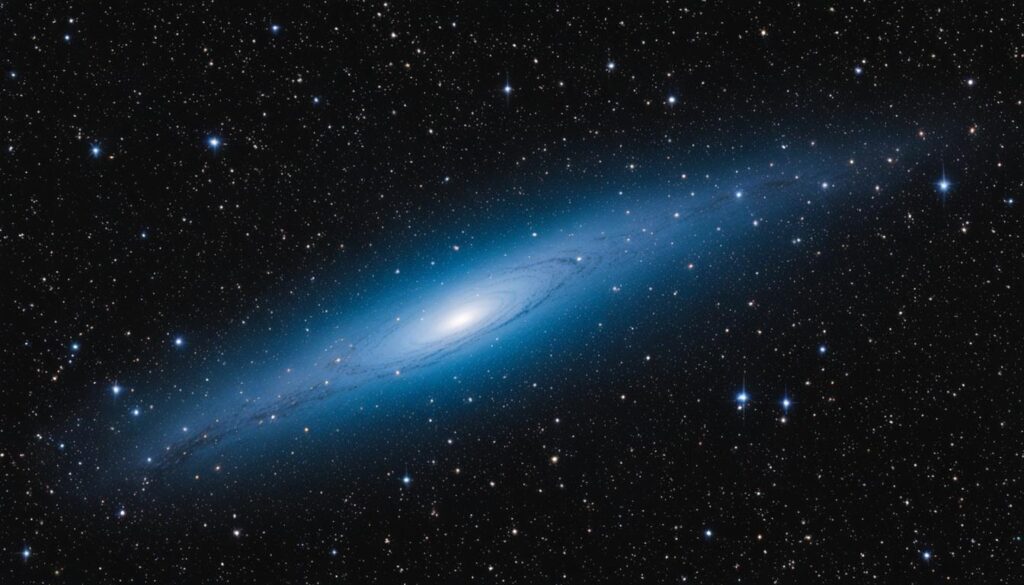
Age and Evolution of Messier 39
Messier 39, a fascinating star cluster in the constellation Cygnus, has an estimated age of 200 to 300 million years. As one of the closest Messier objects to Earth, it offers a unique opportunity for astronomers to study the evolution of star clusters.
Currently, the confirmed members of Messier 39 are in the main sequence phase of their evolution. This means that these stars are actively burning hydrogen in their cores, generating the energy that keeps them shining brightly.
However, stars, like living things, undergo changes throughout their lifetimes. As the stars in Messier 39 continue to evolve, they will eventually exhaust their hydrogen fuel. When that happens, they will enter a new phase of stellar evolution.
At this point, the stars may undergo a dramatic transformation and expand into red giants. These evolved stars will be significantly larger and cooler than their current main sequence counterparts. Their color will shift from blue to red as they release immense amounts of energy.
Ultimately, the fate of the stars in Messier 39 will differ depending on their initial mass. Some may end their lives as white dwarfs, while others may become supergiants or even explode in spectacular supernovae.
This ongoing evolution of the stars within Messier 39 offers astronomers and astrophysicists valuable insights into the life cycles of star clusters and the broader picture of stellar evolution.
| Age | Main Sequence | Evolutionary Phase |
|---|---|---|
| 200-300 million years | Actively burning hydrogen | Potential transition to red giants and other evolutionary paths |
Discovery and Observing Tips
Messier 39, a captivating star cluster, was initially discovered by Guillaume Le Gentil in 1749. It was subsequently cataloged by Charles Messier in 1764, solidifying its place in astronomical records. To fully appreciate the beauty and intricacies of Messier 39, follow these observing tips.
Optimal Observation
For optimal observation, equip yourself with binoculars or small telescopes at low magnifications. These instruments provide a balanced view, allowing you to observe the cluster in detail while capturing its celestial wonder.
Locating Messier 39
To locate Messier 39 in the night sky, try star-hopping from the prominent star Deneb to the 4th magnitude star Rho Cygni, positioned about 9 degrees eastward. Keep track of your progress, as the cluster is found approximately 3 degrees north of Rho Cygni. By following this star-hopping technique, you’ll swiftly discover the brilliance of Messier 39.
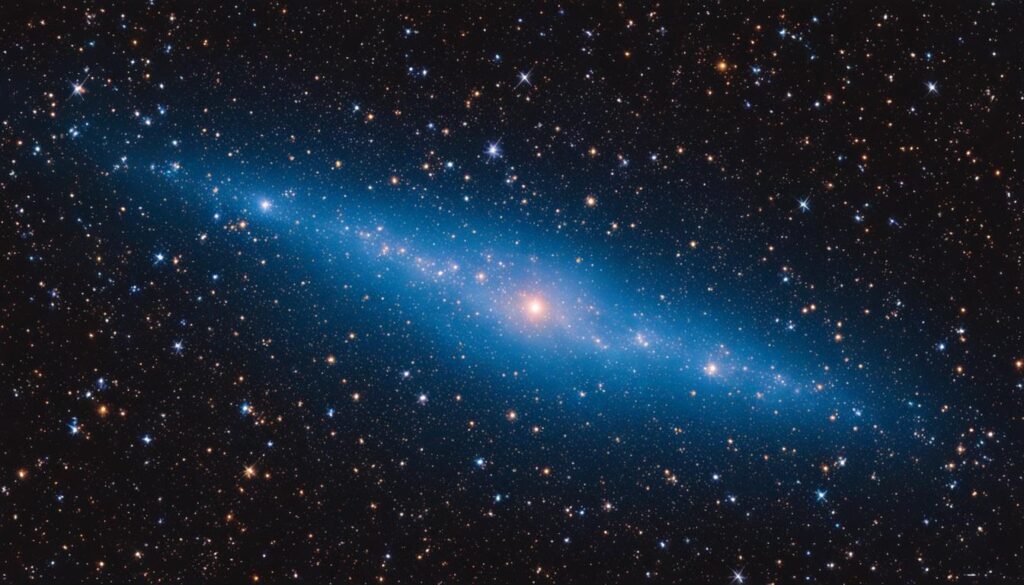
Observing Messier 39 with binoculars or small telescopes allows you to witness the mesmerizing arrangement of stars, enhancing your appreciation for this open star cluster. Take advantage of these observing tips to embark on a captivating journey through the celestial wonders of Messier 39.
Notable Features of Messier 39
Messier 39, classified as Trumpler type III,2,m or III,2,p, exhibits several notable features that distinguish it as a unique star cluster in the night sky.
- Detached from Surrounding Star Field: Unlike some other star clusters, Messier 39 appears detached from the surrounding star field, with no central concentration.
- Moderate Range in Brightness: The stars within Messier 39 display a moderate range in brightness, contributing to the aesthetically pleasing appearance of the cluster.
- Moderate or Poor Population Density: Messier 39 is either moderately rich, with 50 to 100 stars, or poorly populated, containing fewer than 50 stars.
- Loose Arrangement of Stars: One of the distinctive characteristics of Messier 39 is its loose arrangement of stars, creating a visually captivating pattern within the cluster.
- Pairs of Stars: The cluster also features pairs of stars, adding further visual interest and complexity to its overall structure.
These notable features make Messier 39 an intriguing and captivating celestial object for astronomers and stargazers alike.
Observational History and Cataloguing
Messier 39 has a fascinating and extensive observational history, involving notable astronomers such as Guillaume Le Gentil and Charles Messier. This star cluster was first observed by Guillaume Le Gentil in 1749, who documented its celestial position and distinctive features. Eventually, in 1764, Charles Messier cataloged this intriguing cluster as Messier 39 in his renowned astronomical catalog.
The inclusion of Messier 39 in Charles Messier’s catalog emphasizes its significance and unique characteristics within the field of astronomy. Furthermore, Messier 39 has the designation NGC 7092 in the New General Catalogue, which provides additional recognition and documentation of this celestial object.
| Observational History | Cataloguing |
|---|---|
| First observed by Guillaume Le Gentil in 1749 | Cataloged by Charles Messier in 1764 as Messier 39 |
| Recognized for its unique characteristics | Designated as NGC 7092 in the New General Catalogue |
Conclusion
Messier 39, also known as NGC 7092, is a captivating star cluster located in the constellation Cygnus. With its intriguing age, distinctive physical characteristics, and close proximity, Messier 39 has garnered considerable attention from astronomers and astrophotographers. The cluster’s inclusion in the prestigious Messier catalogue further solidifies its significance within the realm of astronomy.
Observing Messier 39 through binoculars or small telescopes offers a remarkable glimpse into its distinct triangular shape and arrangement of stars. This celestial wonder provides a rich and immersive experience, showcasing the intricate beauty of a star cluster in all its glory.
As one of the many gems in the astronomical catalog, Messier 39 continues to fascinate and inspire scientists and enthusiasts alike. Its existence serves as a testament to the intricate and awe-inspiring celestial objects that grace our night sky. Whether you’re a seasoned astronomer or a curious stargazer, Messier 39 is a captivating sight that will leave you in awe of the vast wonders of the universe.
FAQ
What is Messier 39?
Messier 39, also known as NGC 7092, is an open star cluster located in the constellation Cygnus. It is a collection of celestial objects that appear close together in the sky.
How far away is Messier 39?
Messier 39 is situated about 1,010 light-years away from Earth.
How old is Messier 39?
Messier 39 has an estimated age of 200 to 300 million years.
What is the best way to observe Messier 39?
Messier 39 is best observed with binoculars or small telescopes at low magnifications. It is visible to the naked eye under dark sky conditions, but binoculars provide a clearer view.
Who discovered Messier 39?
Messier 39 was discovered by Guillaume Le Gentil in 1749 and later cataloged by Charles Messier in 1764.
How does Messier 39 compare to other Messier objects?
Messier 39 is one of the nearest Messier objects to Earth, making it easily observable. Only a few other objects, such as the Pleiades and the Beehive Cluster, are closer to us.
Are there any notable features of Messier 39?
Messier 39 is classified as a relatively loose cluster with a triangular shape. It contains about 30 confirmed members and has pairs of stars within the cluster.
Is there an image of Messier 39 available?
Yes, there are images available that showcase the open star cluster nature of Messier 39.
How can I locate Messier 39 in the night sky?
Messier 39 can be located by star-hopping from the bright star Deneb to the 4th magnitude star Rho Cygni, which is about 9 degrees to the east. The cluster is then found 3 degrees north of Rho Cygni.
What is the observational history of Messier 39?
Messier 39 was first observed by Guillaume Le Gentil in 1749 and later cataloged by Charles Messier in 1764. It was included in Messier’s catalog, highlighting its significance in the field of astronomy.
What is the conclusion about Messier 39?
Messier 39 is a fascinating open star cluster with unique characteristics. Its age, physical characteristics, and proximity to Earth make it an interesting object of study for astronomers and astrophotographers alike.



